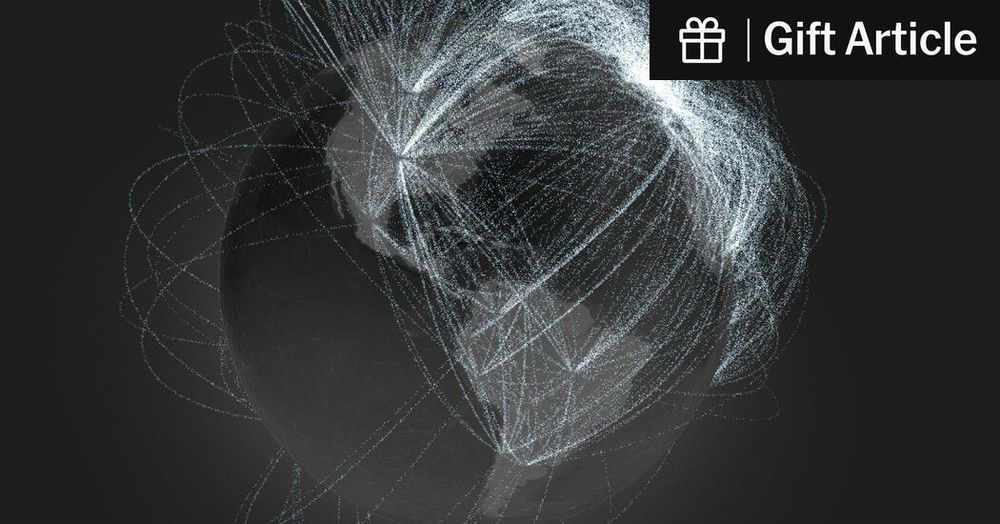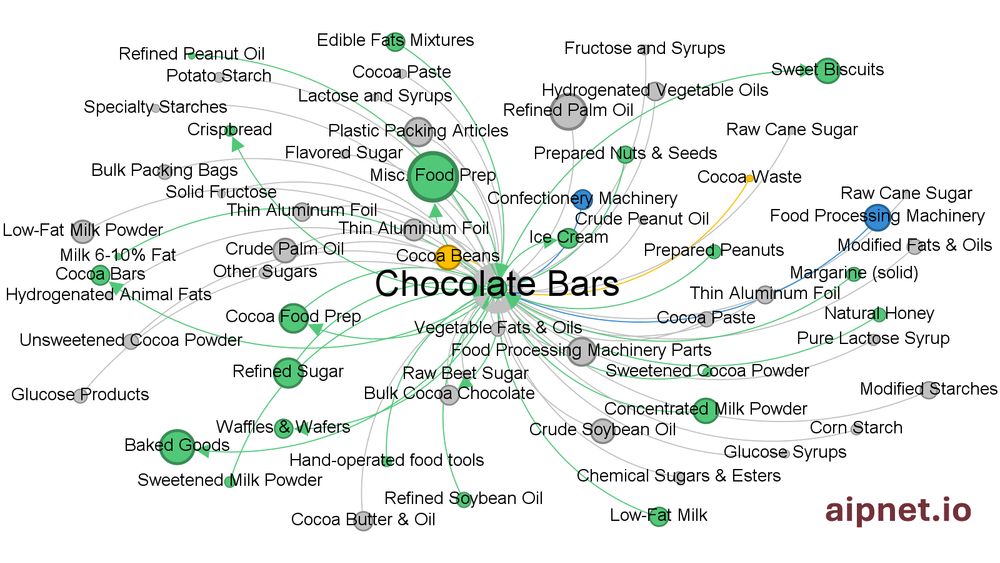by Michael A. Clemens — Reposted by: Peter J. Lambert
These new plots of global migration patterns from the @nytimes.com are breathtaking as well as useful.
I’ve never seen better, more current visualizations of the importance and complexity of global mobility.
I’ve never seen better, more current visualizations of the importance and complexity of global mobility.

Opinion | To Understand Global Migration, You Have to See It First (Gift Article)
These estimates, drawn from the location data of three billion Facebook users, provide a view of human migration in extraordinary detail.
www.nytimes.com
I am really hoping DAME CACAO is an hilarious acronym for the big-chocolate research lobby!
Reposted by: Peter J. Lambert
🚨 Christmas and Chocolate: The hidden Supply Chain🚨
Chocolate is central to global celebrations, especially during Christmas, driving billions in economic activity and connecting farmers, factories, and consumers worldwide. This image reveals how interconnected it all is.
Public data & insights in 🧵
Chocolate is central to global celebrations, especially during Christmas, driving billions in economic activity and connecting farmers, factories, and consumers worldwide. This image reveals how interconnected it all is.
Public data & insights in 🧵

our case the technical aspects of production-processes). If I come across additional work, I will be sure to share here.
...documents, by extracting key entities/concepts and then linking these. But to my knowledge our paper is the first to build a network dataset from a standing-start, such that we begin with nodes (in our case products) and completely generate the connections by tapping into latent concepts (in ..
Thanks for reaching out. The methodology is fairly well documented in our working paper (cepr.org/publications...). There are someML/data science tools applied to build graphical data structures to improve LLM inference, and there is also some work which uses LLMs to link text ...
In our paper, "AI-Generated Production Networks" (2024), joint with with @trfetzer.com Bennet Feld @prashantgarg.bsky.social , we used AI to build a granular input/output network across 5,000+ traded goods. This public dataset can be used to study the knock-on impacts of trade shocks.

Context: This move follows Beijing's recent export controls on germanium & gallium—critical rare earth metals for advanced manufacturing (my coauthor
@prashantgarg.bsky.social
wrote about this recently: bsky.app/profile/pras...
@prashantgarg.bsky.social
wrote about this recently: bsky.app/profile/pras...
📈 Historical shift: Unlike previous trade tensions that targeted consumer goods, today's strategic battleground is upstream—focusing on critical inputs for high-tech manufacturing:
-- Semiconductors
-- EV components
-- Renewable tech
-- Semiconductors
-- EV components
-- Renewable tech
Ostensibly the goal of this move is to support domestic solar production, a highly complex production process which requires key components targeted in this action. Our input/output network can be used to identify all the production linkages for this, and 5,000+ other products:

📊 Key Finding: Above figure calculates the share of trade across products which rely on these five components being targeted. These components are used widely to produce other goods (1st order), which themselves are used wider still (2nd order).
🚨 BREAKING: Biden to announce major tariff hikes on critical production components (e.g. tungsten, polysilicon, solar wafers) - @financialtimes.com
Our research provides a lens to study the ripple effects of this US-China trade escalation. A brief 🧵 (1/6)
Our research provides a lens to study the ripple effects of this US-China trade escalation. A brief 🧵 (1/6)

Reposted by: Peter J. Lambert, Davide Consoli
🚨 China's export bans on Gallium & Germanium: Why it matters
Gallium is central to countless downstream industries: semiconductors, aerospace, telecommunications, & more. This image shows how interconnected it is.
Public data, method & our paper in thread 🧵👇
Gallium is central to countless downstream industries: semiconductors, aerospace, telecommunications, & more. This image shows how interconnected it is.
Public data, method & our paper in thread 🧵👇

Version 1 of the AIPNET Production Network, with all data, is available at aipnet.io. You can also interact with the network in real time on the site! Please reach out if you want to discuss further!

AI-generated Production Network (AIPNET)
A knowledge graph of production-linkages built with AI.
aipnet.io
We are in a world where trade barriers are rising rapidly, yet technological change is insisting on making production ever more complex and interdependent. We hope our (public) data product can provide policy makers, Statistical Authorities, and Researchers with a new lens to study this tension.
Pooling over all products using product-dyads in a DiD setting, there is clear evidence of "onshoring" i.e. increased import demand for upstream/critical products linked to shock-exposed final goods.

Finally, by identifying all the input/output relationships we can empirically test for vertical substition patterns i.e. "onshoring". We take a large trade shock to a small open economy and follow demand for both the focal product and it's basket of production inputs.

Another neat feature of our granular production network is the ability to identify emerging critical inputs, such as Chips, Lasers, Lithium - v. helpful to inform industrial strategy!

Across broad BEC product groups, "Capital Goods" and "Industrial Supplies" have become ever more critical parts of the production network.

We also leverage the AIPNET network structure to measure shifts in import composition towards more critical/central/upstream inputs. We see lots of divergence e.g. 🇨🇳China: Building domestic capabilities 🇺🇸US: Reducing upstream input dependence.

How do we build this? We develop and deploy a new "build-prune" approach using ensemble LLM queries to process & link products at scale. This delivers highly granular connections, vs coarse IO tables or hard-to-access firm-to-firm records.
Some products are incredibly complex, like "Wind powered generators" which require huge amounts of complex parts and materials:

The AI-built Production Network (AIPNET) maps 5,000+ products, connecting them based on production processes. Each node is a product, connections show input/output links. E.g. "Full-fat milk".

🧵 New paper uses AI to map global production networks & study recent shifts in global trade: "AI-Generated Production Networks" by @trfetzer.com @econopete.bsky.social @prashantgarg.bsky.social and Bennet Feld.
